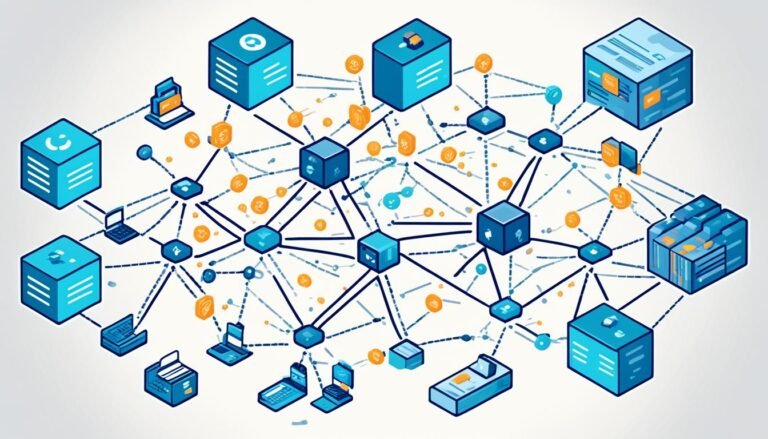Compliance in the Gig Economy: Best Practices
Did you know that the gig economy is estimated to account for 43% of the U.S. workforce by 2020? With the rapid growth of the gig economy, it’s crucial to understand the compliance challenges and best practices that come with it. From gig economy regulations to independent contractor laws, businesses and workers must navigate a complex landscape to ensure compliance and avoid legal consequences.
Compliance in the gig economy is not only about following the rules; it’s about protecting the rights of gig workers, ensuring fair compensation, and maintaining a level playing field for businesses. In this article, we will explore the importance of compliance in the gig economy, the challenges that arise, and the best practices to ensure independent contractor compliance.
Key Takeaways:
- Compliance in the gig economy is crucial to avoid legal consequences and financial penalties.
- Gig economy regulations and independent contractor laws play a significant role in shaping compliance requirements.
- Challenges in ensuring compliance include worker classification and managing compliance across different platforms.
- Staffing companies can provide expertise and resources to help businesses manage IC compliance.
- Best practices for compliance include thorough classification assessments and regular review and updating of compliance practices.
Understanding the Gig Economy: An Overview
The gig economy is a vibrant labor market characterized by short-term contracts and freelance work. It offers individuals the flexibility to choose projects and work on their terms. In this vast ecosystem, various gig economy platforms play a pivotal role in connecting workers with opportunities and enabling businesses to tap into a diverse pool of talent.
Platforms like Uber, TaskRabbit, and Upwork have revolutionized the way people find work and hire talent. Uber, for example, provides a platform for drivers to offer ridesharing services, while TaskRabbit allows users to outsource small tasks and errands. Upwork, on the other hand, connects businesses with freelance professionals across various industries.
One of the key dynamics of the gig economy is the presence of independent contractors. Independent contractors, or ICs, are self-employed individuals who provide services on a project-by-project basis. They play a crucial role in the gig economy by offering their expertise and skills to businesses in need. ICs enjoy flexibility in deciding when and where they work, making the gig economy an attractive option for those seeking freedom and autonomy.
To illustrate the scale of the gig economy, let’s take a closer look at some statistics:
| Platform | Number of Registered Users | Number of Active Workers |
|---|---|---|
| Uber | Over 100 million | 3 million |
| TaskRabbit | Over 60,000 | Approximately 50,000 |
| Upwork | Over 18 million | Approximately 12 million |
These statistics highlight the significant presence of the gig economy and its impact on the labor market. The gig economy provides opportunities for individuals to earn income, pursue their passions, and diversify their work experience.
The Importance of IC Compliance
IC compliance is vital for both businesses and workers in the gig economy. It plays a crucial role in ensuring fair compensation, labor law protection, and maintaining a level playing field among businesses. Failure to comply with IC regulations can result in legal consequences, financial penalties, and unfair competition. By prioritizing IC compliance, businesses can establish a trustworthy and ethical environment for gig workers.
One of the key reasons why businesses need to prioritize IC compliance is to avoid legal consequences and financial penalties. Misclassifying workers as independent contractors when they should be classified as employees can lead to legal liabilities. It is essential for businesses to correctly determine the employment status of gig workers, as noncompliance with labor laws can result in costly legal battles.
“Proper IC compliance ensures that gig workers receive fair compensation and protection under labor laws. It allows them to access entitled benefits and safeguards their rights in the gig economy.”
Compliance also helps level the playing field among businesses. By adhering to IC regulations, businesses prevent unfair competition that may arise from misclassifying workers or underpaying freelancers. Maintaining a fair and competitive gig economy ecosystem benefits not only the workers but also the reputation and sustainability of businesses in the long run.
Furthermore, IC compliance ensures fair compensation for gig workers. Independent contractors deserve to be paid fairly for their services. Compliance with labor laws ensures that gig workers receive appropriate payment for their work and are not exploited by businesses. Fair compensation not only boosts gig worker morale but also attracts and retains top talent in the gig economy.
Overall, IC compliance is crucial to provide gig workers with legal protection, fair compensation, and a level playing field. By prioritizing compliance, businesses can mitigate risks, avoid legal consequences and financial penalties, and create a positive and sustainable gig economy ecosystem.
Challenges in Ensuring IC Compliance
Ensuring IC compliance in the gig economy poses several challenges that businesses and workers must navigate. These challenges include:
- Worker Classification: Classifying workers as independent contractors or employees can be complex due to varying criteria across jurisdictions. The legal landscape surrounding worker classification is evolving, making it essential to accurately determine the proper classification to comply with applicable laws.
- Managing Compliance: With gig workers often operating on multiple platforms simultaneously, managing compliance across different platforms and marketplaces can be challenging. Each platform may have its own compliance requirements and reporting processes, which businesses need to adhere to.
- Gig Economy Evolution: The gig economy is constantly evolving, with new platforms emerging and business models changing. Adapting compliance practices to keep up with these changes can be a challenge. Staying informed about industry trends and regulatory updates is crucial for effective compliance management.
Overcoming these challenges requires proactive measures such as conducting thorough worker classification assessments, developing comprehensive compliance management strategies, and staying updated on the evolving legal landscape. By addressing these challenges head-on, businesses can ensure IC compliance and mitigate the associated risks.
The Role of Staffing Companies in Compliance Management
Staffing companies play a critical role in ensuring compliance with independent contractor (IC) regulations. As intermediaries between businesses and ICs, staffing companies provide valuable guidance on IC classification and ensure adherence to compliance requirements. With their expertise and resources, staffing companies help businesses navigate the complexities of IC classification and labor laws.
One of the key advantages of working with staffing companies is their ability to implement robust compliance management systems. These systems streamline compliance processes and ensure consistent adherence to compliance requirements across various platforms and marketplaces. By leveraging these systems, businesses can mitigate risks associated with IC misclassification and noncompliance.
Staffing companies also excel in providing guidance on IC classification. With a deep understanding of the legal landscape and compliance requirements, they can help businesses make accurate determinations regarding worker classification. This expertise is invaluable in ensuring proper IC classification, reducing the risk of misclassification-related legal consequences and financial penalties.
“Staffing companies act as a bridge between businesses and ICs, ensuring compliance and proper worker classification.”
Moreover, staffing companies enable businesses to stay up-to-date with compliance requirements. Labor laws are constantly evolving, and it can be challenging for businesses to keep pace with these changes. Staffing companies regularly monitor and analyze compliance updates, enabling businesses to adapt their compliance practices and stay in line with current regulations.
In summary, staffing companies play a vital role in compliance management. They offer guidance on IC classification, implement effective compliance management systems, and keep businesses informed about compliance requirements. By partnering with staffing companies, businesses can navigate the complexities of IC compliance and ensure adherence to labor laws.
Best Practices for Independent Contractor Compliance
Ensuring independent contractor (IC) compliance is crucial for businesses and staffing companies operating in the gig economy. By following best practices, organizations can mitigate compliance risks and maintain a fair and legally compliant working environment.
Thorough Classification Assessments
Conducting thorough classification assessments is essential to properly determine the worker classification status of individuals. By carefully evaluating factors such as control, independence, and integration with the company, organizations can accurately distinguish between employees and independent contractors.
Clear Contracts
Maintaining clear and detailed contracts is vital for establishing the terms of engagement with independent contractors. Contracts should clearly outline the scope of work, deliverables, payment terms, and other essential details. A well-defined contract helps establish the independent contractor relationship and minimizes potential misunderstandings.
Training and Support
Providing training and support to independent contractors is crucial to ensure compliance. Organizations should educate contractors about their rights, responsibilities, and relevant legal requirements. Offering resources and guidance on compliance practices helps independent contractors understand their obligations and promote adherence to labor laws.
Reviewing and Updating Compliance Practices
Compliance practices should be regularly reviewed and updated to adapt to changing legal requirements. Keeping up-to-date with evolving regulations and industry standards ensures that organizations are meeting their compliance obligations. Regularly revisiting and updating compliance protocols helps maintain a current and effective compliance framework.
Following these best practices not only promotes IC compliance but also helps foster trust and professional relationships with independent contractors. By prioritizing compliance, businesses and staffing companies can create a mutually beneficial environment for all parties involved.
Implementing these best practices demonstrates a commitment to IC compliance, minimizing the risk of misclassification and potential legal consequences. By conducting classification assessments, maintaining clear contracts, providing training and support, and regularly reviewing and updating compliance practices, organizations can navigate the complexities of the gig economy while ensuring compliance with applicable regulations.
The Hidden Risks of the Gig Economy
While the gig economy offers advantages like hiring flexibility, it also brings with it a host of risks and challenges in terms of legal compliance and worker rights. It is crucial for companies to be aware of these risks and take proactive measures to avoid noncompliance.
The Risks of Misclassification
One of the major risks in the gig economy is the misclassification of workers as independent contractors when they should be classified as employees. This misclassification can have serious legal consequences, leading to labor law violations and potential penalties. It is essential for companies to accurately determine the proper classification of workers, ensuring compliance with relevant regulations.
Noncompliant Employer-Employee Dynamics
In the gig economy, there is a potential for noncompliant employer-employee dynamics to emerge. When companies treat workers as independent contractors without providing them with the benefits and protections entitled to employees, it violates labor regulations and can result in financial liabilities. It is crucial for companies to establish clear and compliant relationships with their workers, maintaining a level playing field within the gig economy.
To illustrate the risks of the gig economy, consider the following example:
“Company XYZ operates a digital platform connecting freelancers with clients. Despite the clear employer-employee dynamics established by the working relationship, the company classifies these freelancers as independent contractors to avoid providing benefits and protections mandated by labor laws. This misclassification not only exposes the company to legal risks and penalties but also deprives workers of their rights and fair compensation.”
Taking Steps Towards Compliance
To address the risks and challenges in the gig economy, companies need to prioritize compliance and take proactive steps to mitigate potential issues. This includes:
- Ensuring accurate worker classification by understanding the criteria set by labor regulations.
- Establishing transparent and compliant contracts that outline the terms and conditions of engagement for both parties.
- Providing proper training and support to independent contractors to foster compliance with legal requirements.
- Regularly reviewing and updating compliance practices to adapt to changing regulations and industry standards.
By taking these steps, companies can minimize the risks associated with noncompliance, protect the rights of workers, and maintain their integrity within the gig economy.
| Risks | Impact |
|---|---|
| Misclassification of workers | Legal consequences, labor law violations, penalties |
| Noncompliant employer-employee dynamics | Financial liabilities, labor regulation violations |
Defining the Gray Area Between Employees and Contractors
The classification of workers as employees or independent contractors depends on the level of control over how work is performed. When an individual is considered an employee, the company dictates specific work hours, processes, tools, and training. On the other hand, independent contractors have the freedom to decide when, how, and where they complete their work.
It is important for businesses to maintain a balance between controlling outcomes and controlling the work itself to avoid unintentional misclassification and noncompliance. Recognizing the nuances of the employer-employee dynamic helps ensure proper worker classification and adherence to labor laws.
Control over Work
One key factor in determining worker classification is the degree of control exercised by the hiring entity. When a company exercises significant control over the details of how work is performed, including providing specific instructions and closely monitoring progress, it is more likely that the worker is an employee. However, if the company only has control over the final product or outcome, with the contractor having autonomy over the work process, then the worker is typically classified as an independent contractor.
It is essential for businesses to carefully evaluate the level of control they exert over workers to avoid misclassification. This evaluation should take into account factors such as setting work hours, providing training, and overseeing the use of tools or equipment.
Employer-Employee Dynamic
The employer-employee dynamic is another crucial aspect of worker classification. Employees typically have a long-term, ongoing relationship with the company, whereas independent contractors usually work on a project-by-project basis or for a limited duration.
The employer-employee dynamic can be influenced by various factors, such as the exclusivity of the relationship, the provision of benefits, and the level of dependence on the company for income. It is important to assess these factors to ensure accurate worker classification and comply with labor laws.
| Employee | Independent Contractor |
|---|---|
| Ongoing relationship with the company | Project-based or limited duration |
| Work directed and controlled by the company | Autonomy in performing work |
| Benefits provided by the company | No company-provided benefits |
| Dependence on the company for income | Multiple clients or sources of income |
Understanding the nuances and complexities of the employer-employee dynamic helps businesses make accurate worker classifications, maintain compliance, and mitigate the risk of legal consequences.
Compliance Challenges with the Gig Model
Compliance risks in the gig economy can have significant consequences for employers. One common challenge is the unintentional misclassification of contract workers, which can result in noncompliance penalties and legal liabilities. Employers must ensure that workers are correctly classified as independent contractors or employees based on applicable labor laws.
Failure to pay into unemployment insurance or social security programs can also pose financial and legal risks. Employers must understand their obligations and ensure compliance with these programs to avoid penalties and potential legal action.
Another compliance challenge arises when boundaries between contractor and employee roles are blurred. Treating contract workers as employees without providing full-time benefits violates labor regulations and can lead to lawsuits and additional costs.
“Proper classification and compliance with labor laws are essential for businesses operating in the gig economy. Failing to meet compliance obligations can result in serious financial and legal consequences.”
Employers must carefully navigate the complexities of the gig model to avoid noncompliant employer-employee dynamics. By implementing clear and effective contractor management practices, businesses can minimize compliance risks and ensure a fair and legally compliant working environment.
Top Compliance Challenges in the Gig Model:
| Challenge | Description |
|---|---|
| Worker misclassification | Unintentional misclassification of contract workers as independent contractors or employees |
| Unemployment insurance and social security obligations | Failure to pay into unemployment insurance or social security programs |
| Treating contract workers as employees | Failing to provide full-time benefits to contract workers |
| Blurred boundaries between contractor and employee roles | Difficulty in distinguishing between the roles and responsibilities of contractors and employees |
Understanding and addressing these compliance challenges is essential for businesses operating in the gig economy. By proactively managing compliance risks, employers can protect themselves from noncompliance penalties, employee misclassification, and labor law violations.
Navigating Global Compliance Complexity
When it comes to global compliance, understanding worker classification rules across different countries can be a complex task. Each country has its own criteria for classifying employees and contractors, which can vary significantly. Staying up-to-date with changing regulations and building region-appropriate protections present challenges for businesses operating on a global scale.
To simplify global compliance and ensure adherence to worker classification rules, businesses should consider the following strategies:
- Understanding Regional Rules: Familiarize yourself with the specific classification criteria and regulations in each country you operate in. This will help you navigate compliance requirements more effectively.
- Screening Contractors: Implement a thorough screening process to ensure contractors meet the criteria for independent contractor status. This may involve assessing factors such as control over work, level of autonomy, and provision of tools or equipment.
- Implementing Standard Operating Procedures (SOPs): Develop region-specific SOPs that outline compliance requirements and provide guidance to managers and contractors. These SOPs should align with local laws and regulations.
- Empowering Managers: Train and empower managers to understand and enforce compliance practices related to worker classification. They should be equipped to make informed decisions and mitigate compliance risks.
- Maintaining Records: Keep detailed records of contractor agreements, classification assessments, and any communication related to worker classification. These records serve as evidence of compliance and can help address any potential disputes or audits.
Navigating global compliance complexity requires a proactive approach and a deep understanding of the legal and operational overhead involved. By following these practices, businesses can navigate the intricacies of global compliance, ensuring worker classification compliance and minimizing the risk of legal consequences or financial penalties.
| Country | Worker Classification Criteria |
|---|---|
| United States | Control over work, financial control, relationship between the parties |
| United Kingdom | Mutuality of obligation, control over work, personal service |
| Canada | Control over work, ownership of tools, chance of profit/risk of loss |
| Australia | Control over work, results-based payment, ability to delegate/subcontract |
| Germany | Integration into the organization, control over work, personal service |
Table: Worker Classification Criteria in Different Countries
Best Practices for Gig Economy Compliance
Compliance in the gig economy is essential for both businesses and workers to maintain a fair and legally sound working environment. By following best practices, organizations can ensure proper worker classification and minimize compliance risks. The following practices are key to achieving gig economy compliance:
Worker Screening
Screening contractors using appropriate criteria is crucial to ensure compliance. This includes verifying their independent contractor status, confirming their qualifications and skills, and conducting background checks. By thoroughly screening contractors, businesses can ensure that they engage with legitimate and properly classified workers.
SOP Implementation
Implementing Standard Operating Procedures (SOPs) is vital in promoting contractor autonomy while maintaining compliance. Clearly defining the scope of work, project expectations, and deliverables in SOPs helps establish the independent nature of the contractor relationship. SOPs should also include guidelines for work processes, communication, and performance evaluation to ensure consistency and compliance across projects.
Manager Empowerment
Empowering managers to maintain compliance is crucial in the gig economy. Managers should be trained in worker classification, compliance requirements, and the proper engagement of contractors. They should have the necessary knowledge and authority to ensure compliance with labor laws and internal company policies throughout the contractor engagement process.
Record-Keeping
Maintaining accurate and comprehensive records of work requirements, communications, and project details is essential for gig economy compliance. Proper record-keeping helps demonstrate the independent contractor relationship and provides evidence of compliance with labor laws. It also serves as a reference in case of any disputes or audits, ensuring transparency and accountability.
“Following best practices for gig economy compliance, such as worker screening, SOP implementation, manager empowerment, and record-keeping, enables organizations to navigate the compliance landscape effectively.”
By adopting these gig economy compliance best practices, businesses can establish a robust compliance framework, mitigate legal and financial risks, and promote a fair and mutually beneficial working environment.
Conclusion
Compliance in the gig economy is an essential aspect that both businesses and workers should prioritize. By implementing gig economy compliance strategies and following best practices, companies can ensure independent contractor compliance and meet global compliance requirements.
Navigating the complexities and challenges of compliance in the gig economy is crucial. Understanding the risks associated with misclassification and staying up to date with regulatory changes are key factors in maintaining compliance. Businesses can leverage resources such as staffing companies and compliance management systems to streamline compliance processes and mitigate risks.
By prioritizing compliance, businesses can create a fair and mutually beneficial working environment for everyone involved in the gig economy. This commitment to compliance not only protects businesses from legal consequences and financial penalties but also ensures that independent contractors receive fair compensation and access to the benefits they are entitled to. Ultimately, compliance in the gig economy is essential for fostering trust and stability in this rapidly evolving labor market.








